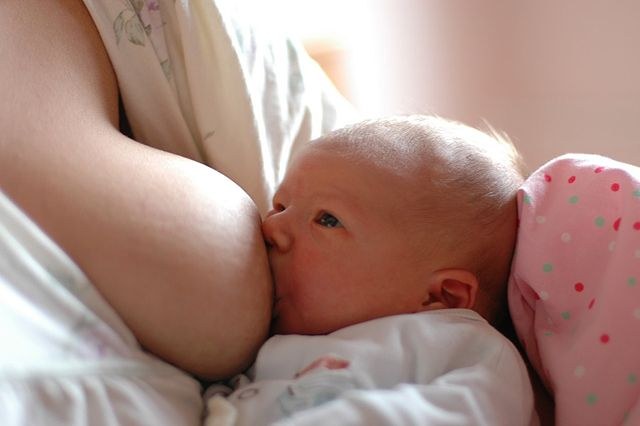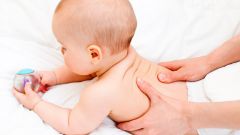"Bepanten" is available as 5% cream and ointment 2.5% lotion. This drug on the basis of dexpanthenol (provitamin B5), being absorbed through the skin, has anti-inflammatory effect, moisturizes and restores the skin. As you know, breastfeeding women often suffer from dryness, cracking and soreness of nipples. Solid gums and subsequently sharp teeth can injure the delicate skin of the nipples, and she heals for a long time, as the skin in this place is subjected to continuous wetting with saliva of the baby and milk. "Bepanten" is intended to solve these problems and allowed to use during pregnancy and lactation.
Cream "Bepanten" has a lighter texture compared to a ointment and is better absorbed. However, for breast care nursing mothers it is preferable to choose a ointment. The fact is that due to a more thick consistency, the cream absorbs into the skin more slowly and hence has a longer duration. In addition, the ointment effectively cope with these lesions as cracked nipples, the bursting of dropsy, wounds from teeth. In favor of ointment as evidenced by the fact that it is not necessary to rinse before feeding. It is harmless for a child, moreover, is quickly absorbed. If the skin had a slight irritation while the skin is not very dry, you can use the cream.
Manufacturers recommend to apply the cream or ointment "Bepanten" after each feeding to prevent cracked and dry nipples. The drug is applied in a thin layer over the entire halo of the nipple. Since the breast is necessary to alternate from feeding to feeding, Much almost completely absorbed by the next attachment. However, if you use cream, it is recommended to wash it off. To wash the Breasts without using soap because it dries the skin and can lead to painful cracks. If the cracks are still there, then you can apply the ointment under a gauze bandage or lactation liner. Do not use wool, as its particles can stick to the wound, causing additional discomfort. Excess ointment should be carefully removed with a cotton pad before feeding. The cracks help of the air bath. If conditions permit, then apply and hold the chest open for a while.
Healing action Much obliged Pantothenic acid, which converts Pro-vitamin B5 when injected into the skin.
What to choose: cream or ointment?
Cream "Bepanten" has a lighter texture compared to a ointment and is better absorbed. However, for breast care nursing mothers it is preferable to choose a ointment. The fact is that due to a more thick consistency, the cream absorbs into the skin more slowly and hence has a longer duration. In addition, the ointment effectively cope with these lesions as cracked nipples, the bursting of dropsy, wounds from teeth. In favor of ointment as evidenced by the fact that it is not necessary to rinse before feeding. It is harmless for a child, moreover, is quickly absorbed. If the skin had a slight irritation while the skin is not very dry, you can use the cream.
Much has almost no side effects except allergic reactions in form of itching and urticaria hypersensitive to the drug.
How to apply "Bepanthen"
Manufacturers recommend to apply the cream or ointment "Bepanten" after each feeding to prevent cracked and dry nipples. The drug is applied in a thin layer over the entire halo of the nipple. Since the breast is necessary to alternate from feeding to feeding, Much almost completely absorbed by the next attachment. However, if you use cream, it is recommended to wash it off. To wash the Breasts without using soap because it dries the skin and can lead to painful cracks. If the cracks are still there, then you can apply the ointment under a gauze bandage or lactation liner. Do not use wool, as its particles can stick to the wound, causing additional discomfort. Excess ointment should be carefully removed with a cotton pad before feeding. The cracks help of the air bath. If conditions permit, then apply and hold the chest open for a while.

